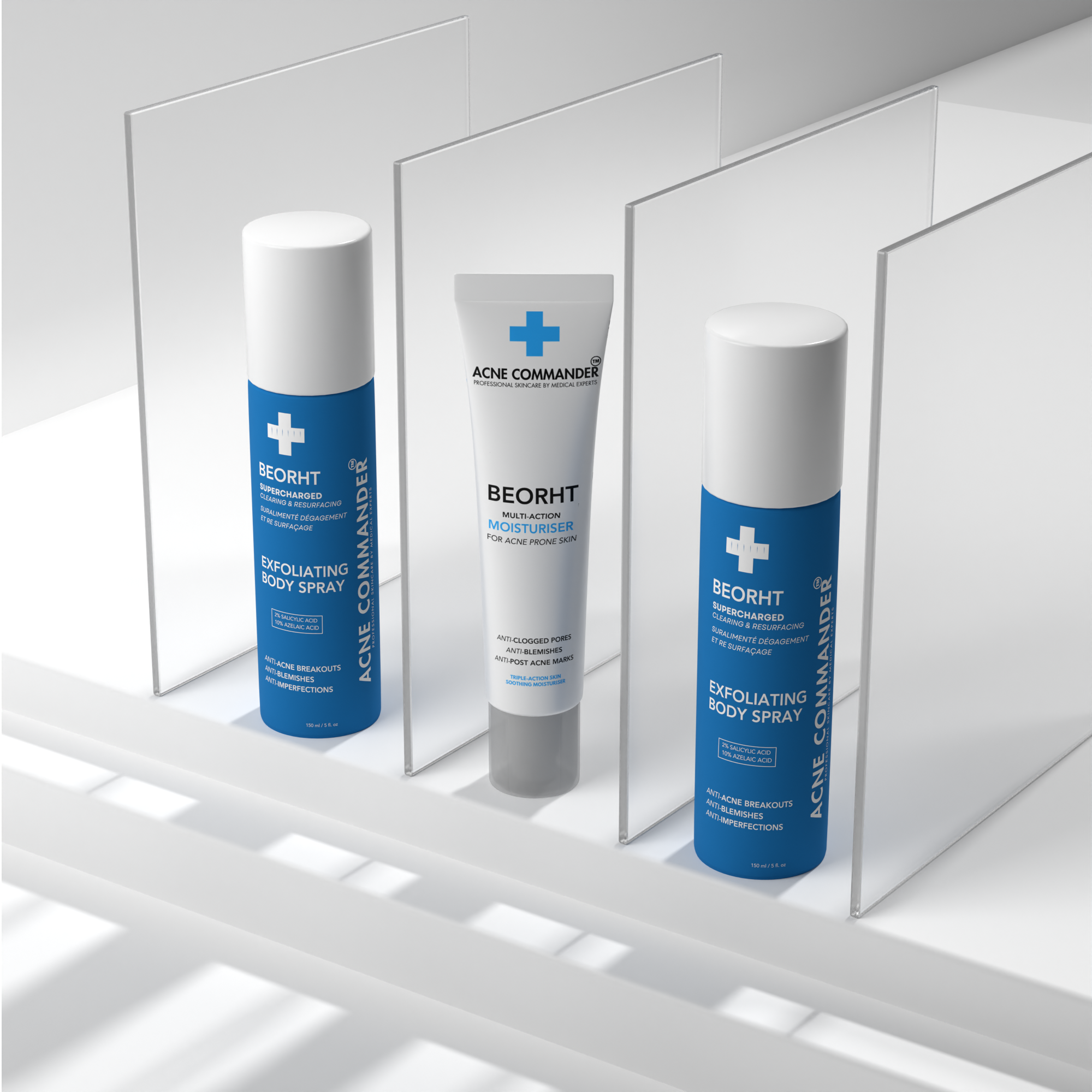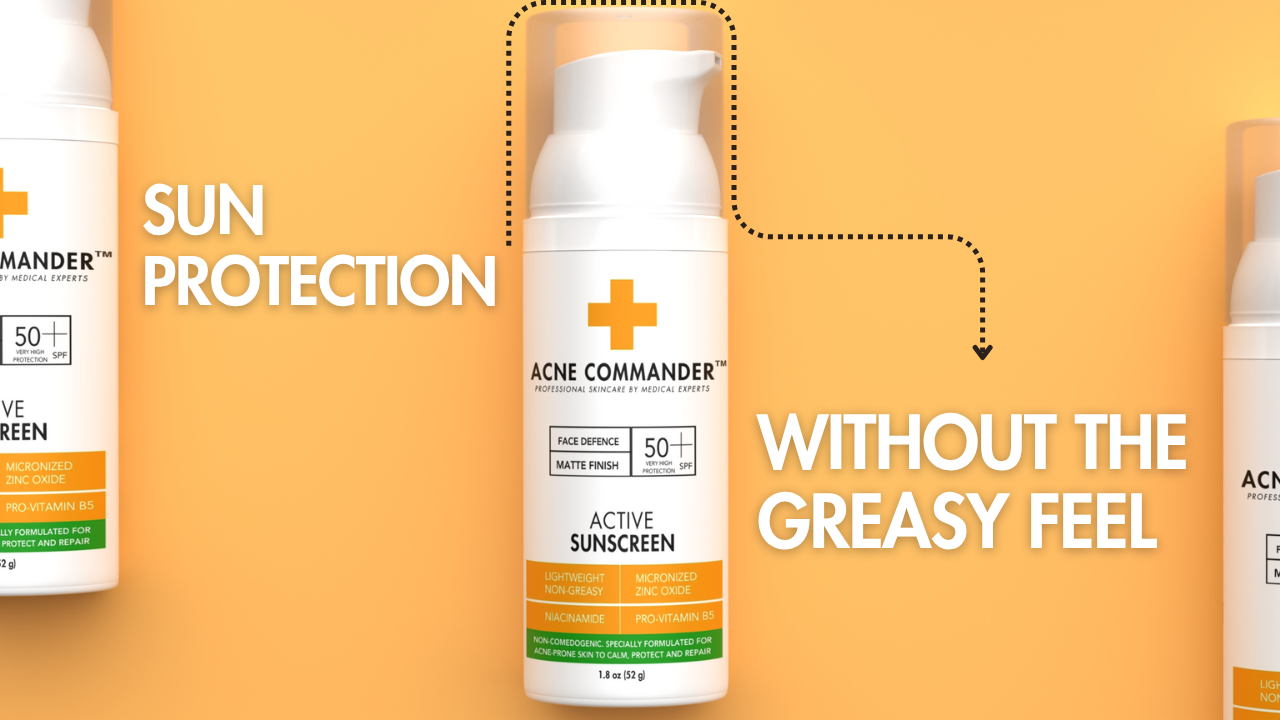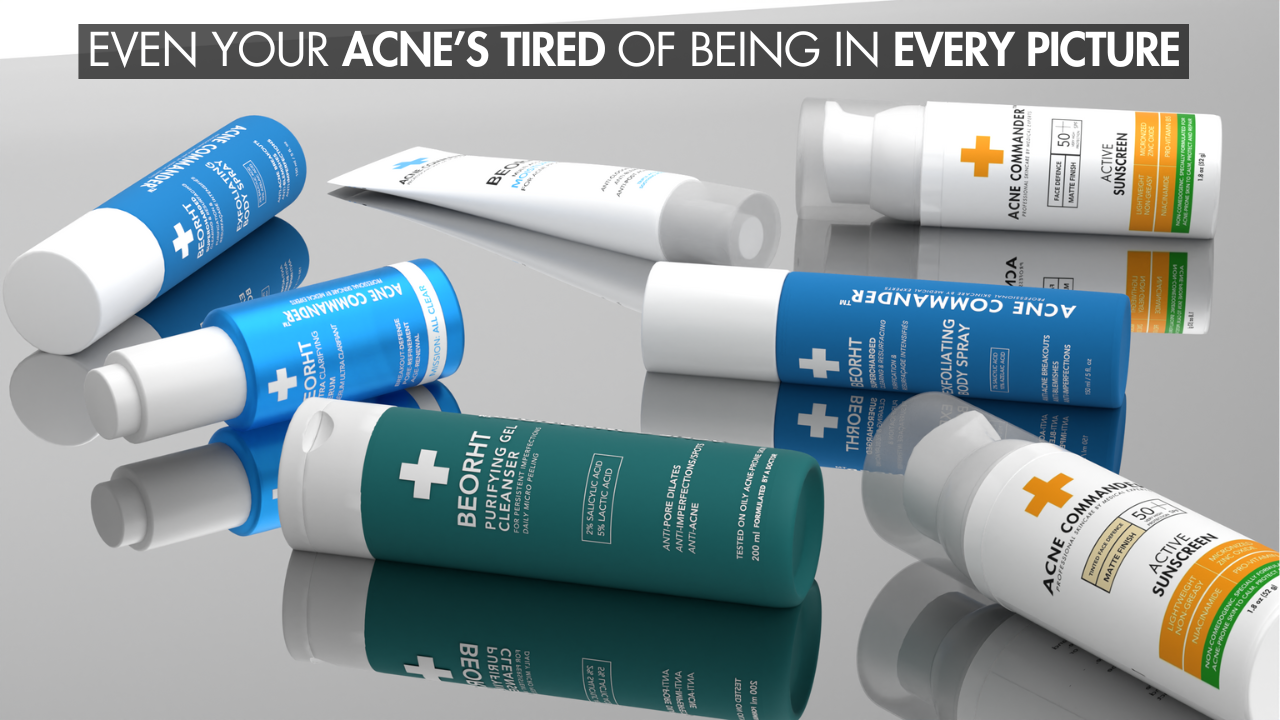Introduction: Why Moisturizing Acne-Prone Skin Is Non-Negotiable
If you have acne-prone skin, you’ve probably been told to “dry out the pimples” or avoid using moisturizer altogether. This outdated advice is not only ineffective, it’s harmful. In truth, moisturizing is one of the most essential steps in managing acne, healing the skin barrier, and preventing future breakouts.
But not just any moisturizer will do.
The wrong formula can clog pores, trigger flare-ups, or leave your skin feeling greasy. The right one, like the Acne Commander 3-in-1 Repairing Moisturiser, can hydrate, heal, soothe, and treat acne simultaneously.
In this in-depth guide, we’ll explore how to moisturize facial skin for acne the right way, including:
-
What to look for in a moisturizer
-
Common mistakes to avoid
-
Step-by-step routines
-
Ingredient breakdowns
-
Why Acne Commander is clinically designed to outperform traditional acne moisturizers
Why Moisturizing Is Essential for Acne-Prone Skin
Let’s get one thing clear: acne is not caused by skin being too moisturized, it’s caused by inflammation, clogged pores, and overproduction of sebum. Ironically, dehydrated skin can worsen all of these.
Here’s why:
-
When skin is dehydrated, it produces more oil to compensate, leading to clogged pores.
-
A weakened skin barrier is more prone to irritation, infection, and breakouts.
-
Overuse of acne treatments (benzoyl peroxide, retinoids) can cause dryness and flaking, which needs to be counteracted with hydration.
-
Post-inflammatory hyperpigmentation (PIH) heals more slowly on dry, compromised skin.
So if you’ve been skipping moisturizer in fear of breakouts, you’re likely doing more harm than good.
Signs You’re Not Moisturizing Enough
-
Tightness or flaking around acne
-
Red, angry blemishes that won’t calm down
-
Oily but dehydrated appearance (a shiny yet rough texture)
-
Acne medication burns or irritates your skin
-
Dark marks (PIH) are slow to fade
If this sounds familiar, it’s time to fix your hydration strategy, without clogging your pores.
What Makes a Moisturizer “Acne-Friendly”?
Not all moisturizers are created equal. When choosing a product for acne-prone skin, here’s what you need:
✅ Non-Comedogenic
The product must not clog pores. Look for formulas tested to be non-comedogenic, like Acne Commander 3-in-1 Repairing Moisturiser.
✅ Oil-Free or Balanced Oils
Prefer oil-free, water-based, or balanced emollients. Avoid heavy oils like coconut oil (comedogenic rating 4), unless skin is extremely dry and tolerant.
✅ Active Ingredients for Acne
The best moisturizers do more than hydrate, they treat acne while moisturizing. Look for ingredients like:
-
Salicylic Acid – unclogs pores and smooths texture
-
Niacinamide reduces inflammation, redness, and oiliness
-
Zinc PCA – regulates sebum and fights bacteria
✅ Barrier Support
Acne skin often has a damaged lipid barrier. Replenishing ingredients like:
-
2-Oleamido-1,3-Octadecanediol (lipid similar to ceramides)
-
Glycerin and Mannose – humectants
-
Dimethicone – a light occlusive that smooths skin
✅ Lightweight Texture
Gel-cream or emulsion textures are preferred. Avoid thick balms or rich creams unless you have very dry skin.
Ingredients to Avoid in Moisturizers for Acne
-
Coconut oil, cocoa butter, lanolin – Highly comedogenic
-
Heavy silicones (e.g., cyclopentasiloxane) – Can trap bacteria
-
Alcohol denat – Very drying and irritating
-
Fragrance – Can inflame sensitive, acne-prone skin
-
Essential oils (eucalyptus, peppermint, citrus) – Irritants
NOTE: Struggling with acne? Check out our helpful acne guide for expert skincare tips!
How to Moisturize Facial Skin for Acne: Step-by-Step Routine
Step 1: Cleanse Gently
Use a sulfate-free, pH-balanced cleanser. Avoid harsh scrubs or foaming gels that strip skin.
→ We recommend: Acne Commander Beorht Purifying Gel Cleanser – with 2% salicylic and 5% lactic acid for gentle exfoliation.
Step 2: Tone or Hydrating Mist (Optional)
Use an alcohol-free toner with soothing ingredients (like centella, green tea, or panthenol).
Step 3: Apply Targeted Treatments
-
Use serums (e.g., azelaic acid, retinol, BHA) first.
-
Wait for 60 seconds before moisturizing.
Step 4: Apply Acne-Friendly Moisturizer
Use 1–2 pumps of a non-comedogenic moisturizer. Apply to slightly damp skin for maximum absorption.
→ Best choice: Acne Commander 3-in-1 Repairing Moisturiser, which hydrates, calms, and treats in one step.
Step 5: Morning Only – Apply Sunscreen
Sun exposure worsens acne and scars. Use a non-comedogenic SPF 30+ every day.
How Often Should You Moisturize Acne-Prone Skin?
Twice daily. Once in the morning, once at night. Even oily skin needs consistent hydration.
✅ Tip:
If your skin feels tight, flaky, or oily a few hours after washing, you need more moisture, not less.
Common Moisturizing Mistakes That Worsen Acne
-
Using no moisturizer – Leads to dehydration, oil rebound, and flaking.
-
Using the wrong moisturizer – Heavy, oily products can clog pores.
-
Over-exfoliating – Damages the barrier and increases sensitivity to moisturizers.
-
Applying too much product – A pea-sized amount is enough.
-
Skipping sunscreen after – Many acne treatments increase sun sensitivity.
Why Acne Commander 3-in-1 Repairing Moisturiser Is the Ideal Solution
Formulated specifically for acne-prone skin, this moisturizer provides:
|
Benefit |
Ingredient |
|
Hydration |
Glycerin, Mannose, Propanediol |
|
Exfoliation |
Salicylic Acid, Capryloyl Salicylic Acid |
|
Redness Reduction |
Niacinamide, Zinc PCA, Allantoin |
|
Barrier Repair |
2-Oleamido-1,3-Octadecanediol, Dimethicone |
|
Microbiome Balance |
Vitreoscilla Ferment |
|
Oil Control |
Silica, Rice Starch |
|
Antibacterial Support |
Piroctone Olamine, Punica Granatum Extract |
Texture:
-
Lightweight, fast-absorbing gel-cream
-
Leaves a matte finish
-
Layers perfectly under sunscreen or makeup
-
Non-pilling, non-greasy, fragrance-light
What Skin Types Can Use Acne Commander?
This formula is ideal for:
-
Oily skin
-
Combination skin
-
Dry, acne-prone skin
-
Sensitive and reactive skin
-
Post-acne healing skin
It’s free from ingredients that cause congestion and loaded with skin-repairing, acne-clearing actives.
FAQs: Moisturizing for Acne
❓ Should I moisturize even if I have oily skin?
Absolutely. Oily skin needs moisture, just in the right format. Skipping moisturizer will make oiliness worse.
❓ What’s the best time to moisturize?
Morning and night, within 30 seconds of washing your face.
❓ Can moisturizer treat acne?
Yes, if it contains actives like salicylic acid, niacinamide, zinc PCA, or botanical antibacterials.
❓ Should I apply moisturizer before or after acne treatments?
After. Let serums absorb, then lock in with moisturizer.
❓ Can moisturizer make acne worse?
Only if it’s comedogenic or contains irritants. Always choose non-comedogenic, fragrance-free, and acne-safe products.
Real Success Stories: Moisturizing the Right Way Changes Everything
Reddit Users:
“I used to skip moisturizer, thinking it caused my acne. Turns out I was dehydrated. Once I added a cream like Acne Commander, my skin calmed down.”
“Niacinamide and zinc in my moisturizer saved me. I don’t even need as much foundation anymore.”
“Moisturizer + SPF every morning is a non-negotiable now. Acne and redness have reduced by half.”
Conclusion: Moisturizing Is the Missing Step in Most Acne Routines
Skipping moisturizer is one of the biggest mistakes people with acne make. Without proper hydration and barrier repair, your skin cannot recover from breakouts or defend itself against future ones.
But hydration alone isn’t enough. You need a moisturizer that also:
-
Treats and prevents acne
-
Soothes irritation and redness
-
Supports the skin’s microbiome
-
Restores the lipid barrier
-
Improves skin texture
That’s exactly what Acne Commander 3-in-1 Repairing Moisturiser delivers, making it one of the most intelligent, high-performance moisturizers ever developed for acne-prone skin.






